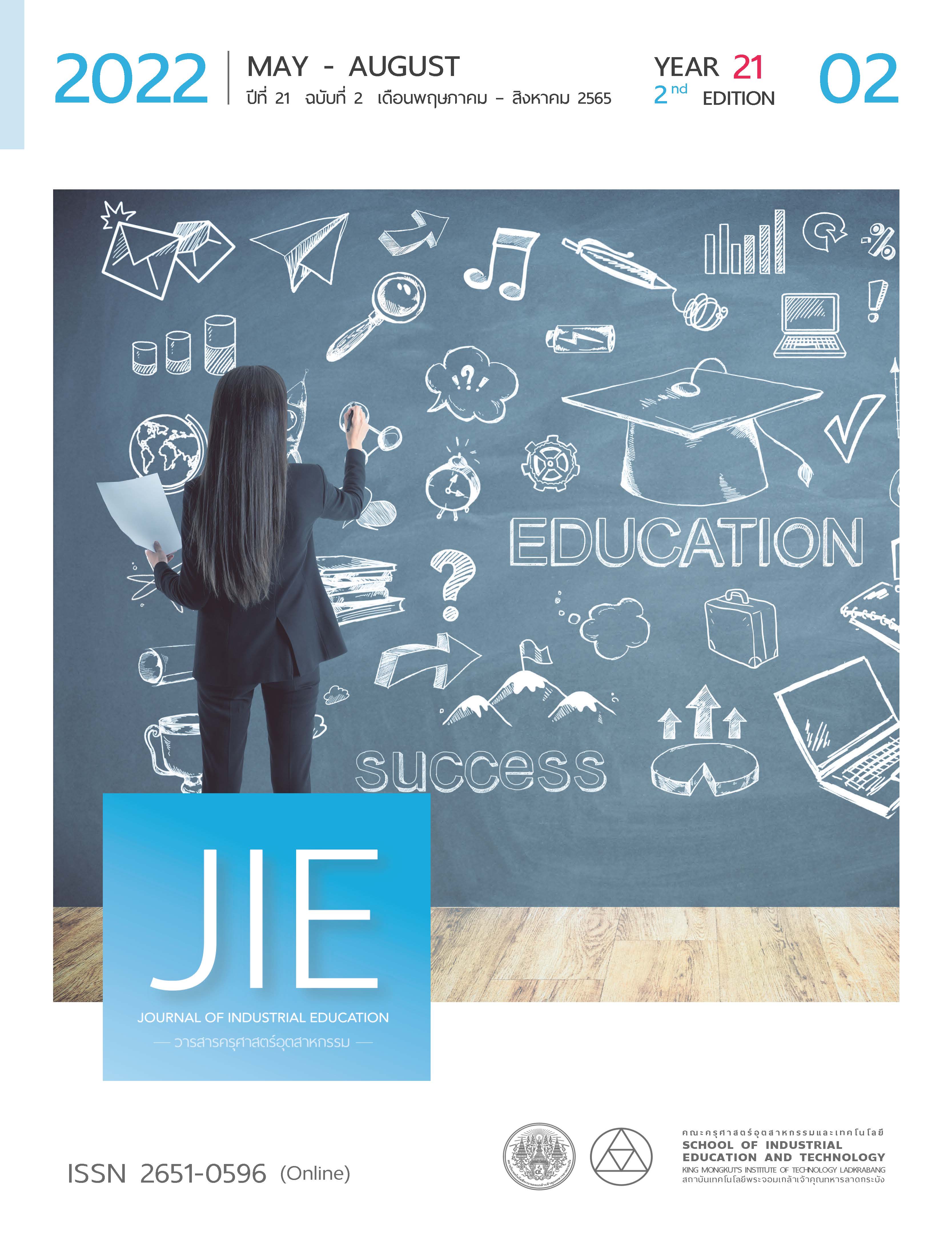THE EFFECTS OF ACTIVE LEARNING MANAGEMENT WITH THINK TALK WRITE TECHNIQUE ON MATHEMATICAL CONCEPT AND COMMUNICATION ABILITIES OF MATHAYOMSUKSA III STUDENTS
Keywords:
Active Learning, Think Talk Write Technique, Mathematical Concept, Mathematical Communication, Mathayomsuksa 3 StudentsAbstract
The researchers used the One – shot case study design research model in this study, which randomly selected
a single sample group. The researchers used the selected sample group with Active Learning Management With Think Talk Write Technique. The raw data was analyzed into an average score the analyzed average score to answer the research hypothesis. The sample was 45 Mathayomsuksa 3/10 students studying in second semester of 2021 school year at Phanatpittayakarn School. They were selected by cluster random sampling. The research instruments used in this research consisted of six lesson plans on circle with the suitability of the average learning lesson plans of 4.76 and standard deviation of 0.35, Mathematical concept test eight items on circle with Index of Item-Objective Congruence between 0.80-1.00, Difficulty between 0.40–0.67, Discrimination between 0.33–0.80 and reliability of 0.72, and Mathematical speaking communication evaluation form four levels of rating scale for four items with Index of Item-Objective Congruence of 1.00. Mathematical writing communication test eight items on circle with Index of Item-Objective Congruence is between 0.80-1.00, Difficulty between 0.43–0.73, Discrimination between 0.30–0.53, and reliability of 0.75. Statistics used for analyzing the data collection were mean, percentage, standard deviation, and t-test for one sample. Research results found that Mathematical concept on Circle of Mathayomsuksa III applying Active Learning Management with Think Talk Write technique is higher than the criterion of 70 percent at .05 level of significance and Mathematical communication ability on Circle of Mathayomsuksa III applying Active Learning Management with Think Talk Write technique is higher than the criterion of 70 percent at .05 level of significance.
References
Adriani, M. (2008). Dunia Matematika. http://www.thinktalkwrite.2008.html
Chamnankit, B. (2006). Why is it necessary to manage curiosity in higher education. Knowledge Management Nakhon Sawan Rajabhat University, 1(1), 1-7. (in Thai)
Dechakupt, P., & Yindeesuk, P. (2017). teach children to do projects teaching teachers to do research class action Guidelines for creating Thai people 4.0. Chulalongkorn University Printing House. (in Thai)
Dila, D. O. (2012). Think talk write strategies. http://syahputri90dila.blogspot.com /2012/01/metode-pembelajaran-bahasa-inggris_12.html
Essay Sauce. (2019). Understanding of circles and circle theorems in geometry. https://www.essaysauce. com/science-essays/understanding-of-circles-and-circle-theorems-in-geometry/
Hazzan, O., Lapidot, T., & Ragonis, N. (2011). Guide to teaching computer science. Springer-Verlag.
Hidayati, R., Fauzan, A., & Hakim, R. (2019). Implementation of Think Talk Write (TTW) strategy to improve understanding of concept and communication of mathematics. In W. Striełkowski (Ed.), Advances in Social Science, Education and Humanities Research. 1st
International Conference on Innovation in Education (ICoIE 2018) (pp. 53-56). Atlantis Press.
Huinker, D., & Laughlin, C. (1996). Talk you way into writing. In P. C. Elliot & M. J. Kenney (Eds.), Years book 1996. Communication in mathematics, K-12 and beyond (pp. 81-88). NCTM.
Institute for the Promotion of Teaching Science and Technology (IPST). (2012). Mathematical skills and processes (3rd ed). 3-Q Media. (in Thai)
Institute for the Promotion of Teaching Science and Technology (IPST). (2020). About PISA. https://pisathailand.ipst.ac.th/about-pisa/
Jongkesakorn, C., & Manoruang, P. (2019). Developing learning activities in the form of active learning for new generation learners according to the policy to reduce study time, increase learning time. https://anyflip.com/phlpt/bzga/basic
Makanong, A. (2010). Mathematical skills and processes: Development for development. Chulalongkorn University Press. (in Thai)
Makanong, A. (2014). Mathematics for middle school teachers. Chulalongkorn University Press. (in Thai)
Mayakusuma. (2012). Pengertian dan Sintakas Model pembelajaran TTW. n.p.
National Institute of Educational Testing Service (NIETS). (2020). Ordinary national education test report. http://www.newonetresult.niets.or.th/AnnouncementWeb/Login.aspx
Phiromrat, S. (2012). Effects of using think-talk-write technique in organizing mathematics learning activities based on inquiry model on mathematical reasoning and communication abilities [Master’s thesis]. Chulalongkorn University. (in Thai)
Pinla, W., & Pinla, W. (2018). Management of social studies in the 21st century. Chulalongkorn University Printing House. (in Thai)
Pruttikul, S. (2012). Quality of students derived from active learning process. Administrative Journal Burapha University Education, 6(2), 1-13. (in Thai)
Srinok, W. (2018). The effects of organizing learning actives using concept attainment model and active learning on mathematical concepts and reasoning ability of Mathayomsuksa IV Students [Master’s thesis]. Burapha University. (in Thai)
Thongnuan, P. (2011). The effect of organizing active learning emphasized representation on mathematical achievement, reasoning, and communication abilities in relations and functions of Mathayomsuksa IV Students. [Master’s thesis]. Srinakharinwirot University. (in Thai)
Wiwattananon, S. (2007). Reading, analytical and writing skills. C.C.knowledge linksPress. (in Thai)
Downloads
Published
How to Cite
Issue
Section
License
Copyright (c) 2022 Journal of Industrial Education

This work is licensed under a Creative Commons Attribution-NonCommercial-NoDerivatives 4.0 International License.
"The opinions and contents including the words in papers are responsibility by the authors."
"ข้อคิดเห็น เนื้อหา รวมทั้งการใช้ภาษาในบทความถือเป็นความรับผิดชอบของผู้เขียน"



